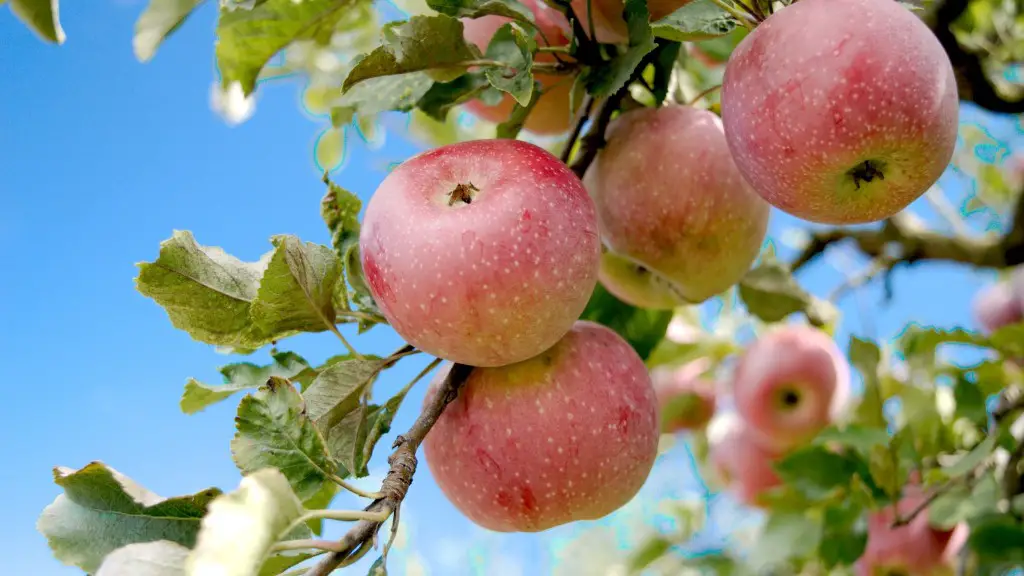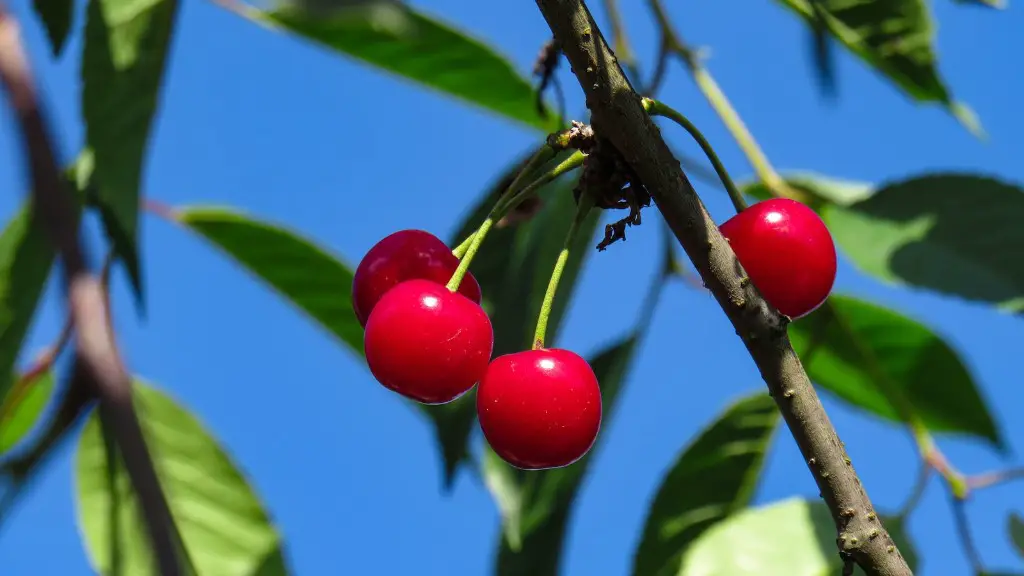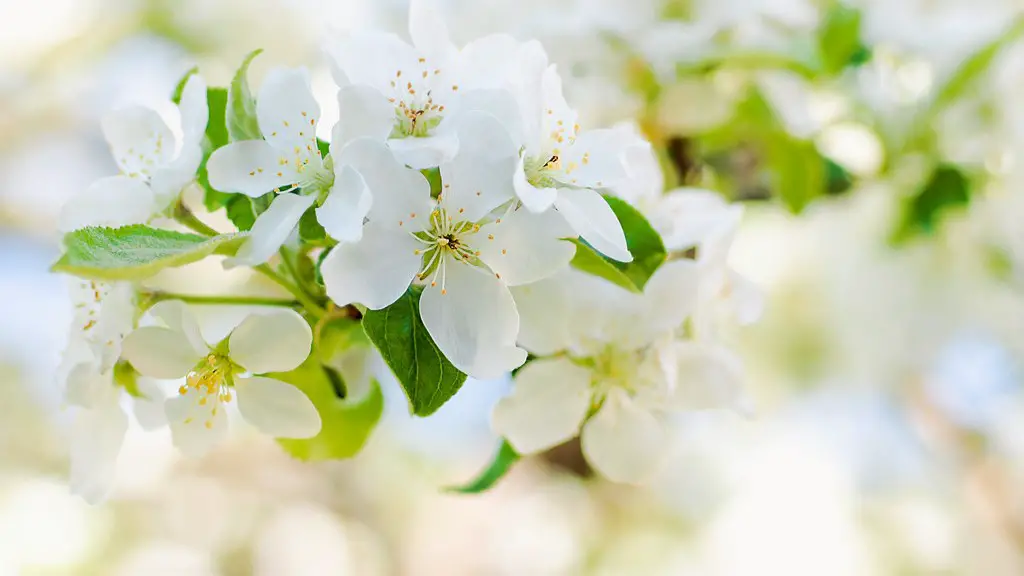Mcintosh is one of the most iconic apple trees of all time and is widely known for its juiciness and delicious flavor. But, like all other apple trees, it requires pollination by a compatible apple tree in order to produce fruit. Choosing the right pollinator is an important part of growing a healthy and bountiful apple tree, and with some research, any gardener can get the desired results.
The optimal pollinator for a mcintosh apple tree would be another apple tree with a similar bloom time. Choosing a variety with the same bloom time ensures that bees can ensure successful pollination, which is an essential step in the production of fruit. Some compatible pollinators for the mcintosh apple tree include: Spigold, Rome, Liberty, Honeycrisp, Jonathan, Northern Spy, and Golden Delicious.
Pollination is a process which happens when the male floral components (pollen) from one apple tree travel to the ‘female’ floral region (stigma) of another compatible tree. This process takes place when bees, birds or other insects travel between the trees and pollinate their flowers. If the pollen from another compatible tree isn’t available, then the mcintosh tree won’t be able to bear fruit.
In order to ensure successful pollination, the compatible pollinator tree must be within 50 feet of the mcintosh tree so bees and other insects can easily travel between them. It’s also important to ensure that the trees have overlapping bloom times. The best way to gauge this is to look online or at a local nursery and read the bloom time descriptions on the tags of the trees.
When it comes to keeping the tree healthy, it’s important to prevent pests and disease. This can be done by pruning the trees regularly and by spraying the trees with a pesticide. Cleaning up fallen fruit and leaves at the base of the tree can also help to keep the tree healthy. Additionally, providing the tree with adequate water is essential for ensuring its survival.
Companion Plants
Besides having a compatible pollinator, a Mcintosh apple tree may benefit from companion plants. These plants can be used to attract beneficial insects to the tree, deter pests, or provide nitrogen to the soil. Good companion plants for Mcintosh apple trees include garlic, yarrow, chives, parsley, and oregano.
Garlic is known for its strong pungent odor, which can help to repel pests like aphids and mites that may cause damage to the apple tree. Yarrow and chives also help to repel pests while also providing nectar to bees. Parsley’s deep root system helps to improve soil nutrition and aeration, while its flowers provide nectar to bees.
Finally, oregano helps to attract pollinators such as honeybees and bumblebees which are important in the pollination process. Additionally, oregano is known to help improve soil nutrient levels. All of these companion plants can be used to help create a healthier environment for the apple tree and help it to produce a larger crop.
Grafting
Grafting is another important part of growing a Mcintosh apple tree. In grafting, a piece of wood, called a scion, is taken from one tree and grafted onto the rootstock of another. This is done to produce a tree that is more resistant to disease and better suited for a particular climate.
The scion must first be chosen from a specific variety that is compatible with the rootstock. After selecting the scion, it must be prepared and carefully grafted onto the rootstock. This process requires skill and precision, and is best left to professionals. Once grafted together, the trees must be monitored and cared for to ensure that the graft union remains healthy and strong.
Grafting can have several benefits. It can help to produce a higher quality crop through better fruit quality and a better resistance to disease. It can also increase the chance of success with pollination, as the scion may produce fruit that is more compatible with the rootstock. Finally, grafting can help to increase the number of fruiting spurs on a tree, making it more productive.
Pruning
Pruning an apple tree is also essential for its health and productivity. When pruning a Mcintosh apple tree, it’s important to focus on keeping the tree open and airy, so that sunlight can reach the blossoms and fruit throughout the tree. This can be done by removing any dead, diseased, or damaged branches, as well as any branches that are too close together.
It’s also important to thin the tree out in order to keep it from becoming too crowded. This helps to ensure that each branch receives adequate sunlight, which is essential for the flower and fruit production. Finally, pruning helps to keep the size of the tree manageable, making it easier to care for in the long run.
Irrigation
A Mcintosh apple tree also benefits from regular irrigation. This is necessary to provide the tree with enough water to support its growth and development, and to keep the roots from drying out. Apple trees need 1-2 inches of water per week, spread over 3-5 days. This can be done through surface irrigation or through a drip system.
The best time to irrigate the tree is in the early morning when the ground is cooler and the leaves have plenty of time to dry before nightfall. To ensure the tree gets enough water, it’s important to check the soil around the base of the tree and irrigate when the top inch of soil is dry. This will help to keep the tree healthy and productive.
Fertilization
Fertilizing a Mcintosh apple tree is also essential for ensuring its health and growth. The best time to fertilize the tree is in early spring after the buds have begun to swell or in late summer when the apples are developing. During these times, a balanced fertilizer should be applied to the base of the tree. This will help to provide the tree with the necessary nutrients for growth.
It’s important to not over-fertilize, as this can lead to excessive leaf growth, a decrease in fruit production, and an overall decrease in tree health. If a tree’s soil tests show it to be deficient in any particular nutrient, then a fertilizer specially formulated for that nutrient can be applied to supplement the soil.
Pollinating the Mcintosh apple tree with a compatible tree is an essential part of growing a bountiful and healthy tree. While selecting the right pollinator is important, there are also other factors that need to be taken into consideration. Companion plants, grafting, pruning, irrigation, and fertilization are all important for the other aspects of tree growth, health, and productivity.




